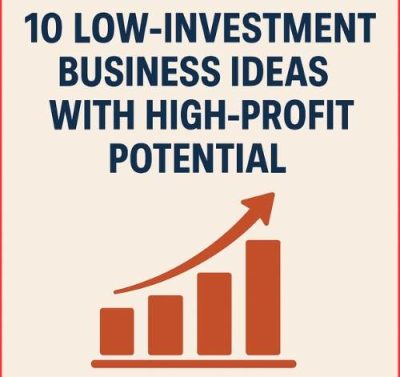Introduction to Food Delivery Industry Growth in India
India has witnessed explosive growth in its food delivery industry over the last decade. From a niche industry limited to certain metro cities, online food delivery has now spread across the entire country, penetrating Tier 2 and 3 cities.
| S.No. | Table of Contents |
| 1 | Introduction to Food Deliver Industry Growth in India |
| 2 | Statistics and Facts on the Growth of Food Deliveries |
| 3 | Business Models – Cloud Kitchens, Virtual Restaurants |
| 4 | Major Players: Swiggy, Zomato, Foodpanda, etc |
| 5 | Emergence of Food Delivery Franchises in India |
| 6 | Market Opportunities and Scope for New Franchises |
| 7 | Conclusion – Future Outlook and Forecasts for the Industry |
As per a recent report by Google and Boston Consulting Group (BCG), the Indian food delivery industry is expected to grow from $4 billion in 2019 to over $8 billion by 2023. One of the key factors fueling this rapid growth is the rising number of working professionals in urban areas who have less time for cooking but have disposable income for ordering food frequently.
Source: Research And Markets
Statistics and Facts on the Growth of Food Deliveries
Source: Restaurant India
As per recent industry reports by leading research firms, some key facts regarding the stellar growth of food deliveries in India:
- The number of orders by online food delivery platforms grew 20 times from 2016 to 2021. 25 million people are now using food delivery apps every day. This exponential growth has been driven by increasing smartphone penetration, working professionals with high disposable incomes, and nuclear families in urban regions.
- Tier 1 metro cities like Bangalore and Delhi-NCR contribute the highest GMV currently. But tier 2 cities are seeing 3x faster growth. Food tech giants are increasingly shifting focus beyond saturated metros towards India’s high-potential smaller cities for the next growth spurt.
- Tier 2 & 3 cities are driving growth with 45% orders. Metros are nearing saturation. Food tech companies are realizing the untapped potential in India’s non-metro cities and targeting them for expansion by offering vernacular interfaces, customized pricing, and hyperlocal menus.
- The effects of COVID-19 boosted food deliveries in India as restaurants shut down and home deliveries emerged as a safer option. Lockdowns and social distancing norms made online food delivery platforms the easiest way for people to order daily meals and discover new restaurants from the comfort of home.
- The Indian online food delivery market grew at 150% CAGR over the last 5 years to reach nearly 500 million orders and $4 billion GMV in 2021. Industry reports project the high growth streak to continue with a projected 30% year-on-year growth for the next 3-4 years at least.
- Growth is expected to accelerate and online food delivery in India will be an $8+ billion market by 2023. Rising mobile internet access in smaller towns, falling data costs, and a growing working women population are key drivers for growth.
- Currently, 95% market share lies with just two players – Swiggy (~55% share) and Zomato (~40%). The high density and frequency of orders give Swiggy and Zomato scale, data and network effects advantages that create a high entry barrier for newer players.
- The average order value stands at ₹300. Orders below ₹400 account for 85% of the total. The low average order value highlights the affordability and mass market penetration of online food delivery across socio-economic categories.
Business Models – Cloud Kitchens, Virtual Restaurants
Source: Apicbase
Food delivery franchises in India have introduced innovative models for efficient growth beyond simply aggregating and delivering orders:
Cloud Kitchens
Swiggy & Rebel Foods have set up their dedicated network of commercial kitchen spaces optimized for efficient food preparation only meant for delivery. Brands like The Bowl Company operate only on Swiggy with no physical restaurants. Cloud kitchens allow for rapid scaling up and down of operations as per demand dynamics without high rental overheads for dine-in infrastructure.
Virtual Restaurants
A restaurant exists only on Swiggy/Zomato for ordering but kitchen space and food prep are leased on-demand from kitchen infra providers. Provides flexibility. The virtual restaurant model allows the validation of multiple food concepts and cuisines using different brands on delivery apps without major upfront investment.
Private Labels
Large players have launched their private brands focusing on specific food categories like biryani or ice cream. These compete with restaurant partners. Private labels give platforms better margins while also providing leverage for negotiating deals with existing restaurant partners in the ecosystem.
Subscription Plans
Swiggy & Zomato offer weekly/monthly packages for free/discounted deliveries to drive loyalty & retention. Higher frequency translates to more ordering. Subscription programs incentivize customers to order more frequently making food delivery platforms their go-to solution for everyday food needs.
Grocery Delivery
Leveraging existing fleet & logistics capabilities to enable grocery delivery from local stores in under 45 minutes. The synergies between food and online grocery deliveries allow better optimization of last-mile fleet usage by aggregators especially in peak order seasons.
Major Players: Swiggy, Zomato, Foodpanda, etc
Source: LinkedIn
Swiggy and Zomato dominate with 95% combined market share in food delivery in India. Key highlights:
Swiggy
Pioneer of food delivery in India. Currently valued at $10.7 billion. 55% market share. The Iris platform offers restaurants unified access to multiple food delivery and dine-in apps. Swiggy owns brands & cloud kitchen network. Innovating with Instamart for grocery delivery and Swiggy Genie for pickup & drop services. Strong focus on tier 2&3 cities to prevent saturation. Swiggy has also started its meat delivery service under the brand Swiggy Go and is using ML to predict demand across locations for effective inventory management.
Zomato
Publicly listed with a nearly $7 billion market cap. A pioneer in restaurant discovery before moving to food delivery. Nearly 40% market share. Focusing on expanding to 500+ Indian cities offering localized menus. Started 10-minute food delivery under Zomato Instant. Exploring foray into alcohol delivery. Nutraceutical offering with Zomato Health. Zomato is leveraging its vast database to provide personalized recommendations and has an industry-first Gold subscription for benefits across dining-in and delivery.
Foodpanda
Failing to keep pace with Swiggy and Zomato’s rapid growth, Foodpanda was acquired by over-delivery platform Ola for only $20M from Germany-based DeliveryHero. Less than 5% market share remaining. Post-acquisition, Ola has been unable to revive Foodpanda and give major competition to Swiggy & Zomato, leading to market rumors of exiting food delivery and focusing funds only on the core ride-hailing business.
Emergence of Food Delivery Franchises in India
Source: LinkedIn
While the duopoly of Swiggy & Zomato dominates, scope exists for emerging food delivery franchises in India’s high-growth industry:
Benefits
- Venture funding eco-system in India actively investing across food delivery
- Rising purchasing power & disposable incomes even in smaller cities
- Changing consumer lifestyle with a preference for convenience & variety
Risks & Challenges
- Tough to compete on scale with Swiggy & Zomato’s network effects
- Wastage & stale food risks due to fluctuating demand
- High consumer acquisition costs mandate deep discounting & cash burn
Two startups that have transformed the landscape are Swiggy and Zomato. From initially starting by delivering food from local restaurants, these food delivery franchises in India have expanded into cloud kitchens, virtual brands, and more.
Swiggy and Zomato have raised billions in funding, achieving the coveted “unicorn” status of over $1 billion valuations each. As of 2022, Swiggy was valued at $10.7 billion while Zomato had a market cap of nearly $7 billion after going public.
Market Opportunities and Scope for New Franchises
Source: LinkedIn
Despite the challenges, attractive opportunities exist for new food delivery franchises:
Specialized Cuisine Focus
Beyond standard fast food, deliveries focusing on specific regional cuisine types or niche offerings have the potential for success eg: Health food brands and nutraceuticals. Startups can leverage social media and community building to drive the adoption of lesser-known cuisine varieties on delivery platforms.
Leveraging Cloud Kitchens for Expansion
Setup focused kitchen spaces only for deliveries providing flexibility and operations optimization. Removes high real estate overheads. Cloud kitchens allow testing of multiple virtual restaurant brands from a single location to identify what sticks with low risk.
Synergies with Quick Commerce
10-minute deliveries will be big. New franchises combining food & grocery deliveries to a common area allow faster turnaround & effective fleet utilization. Integrating food delivery with on-demand e-grocery verticals like Swiggy Instamart allows cost and time efficiencies in last-mile fulfillment.
Smaller Cities & Towns
While metros move towards saturation, India’s smaller cities with a lack of food options provide major headroom for growth. Customized, localized offerings will work. Startups will need to invest in understanding hyperlocal tastes and preferences to curate delivery menus that resonate with smaller city consumers.
Conclusion – Future Outlook and Forecasts for the Industry
Source: LinkedIn
India’s food delivery industry is still in its fast growth stage of evolution. As per recent industry reports:
- 25% Year-on-Year growth expected from 2022 onwards to reach $12 Billion+ in GMV by 2026
- Average order value to keep increasing driven by tailored premium offerings and tier 2,3 city demand.
- Swiggy & Zomato are likely to hold a dominant market share in the coming years. Though competition is expected to intensify.
- Cloud kitchens and virtual restaurant brands are set to gain major traction with dedicated infrastructure and tailor-made food for delivery.
- New franchises can still capture niche opportunities around specialized cuisine, health food, personalized chef experiences, etc.
- International expansion is also on the horizon – Swiggy and Zomato aiming to take Indian flavors overseas to geographies like Southeast Asia, and the MENA region.
The runway for growth in food delivery continues to be long and promising. Alongside the unicorns Swiggy & Zomato, the emerging food delivery franchises in India have bright prospects in this sunrise industry for years to come.















